“Hồn Trống Việt” (Soul of the Vietnam’s Drum) would like to bring knowledge about the Viet Drum’s Law of Changes (VDC), encoded on the “Ngoc Lu” Drum.
Ngoc Lu Bronze Drum
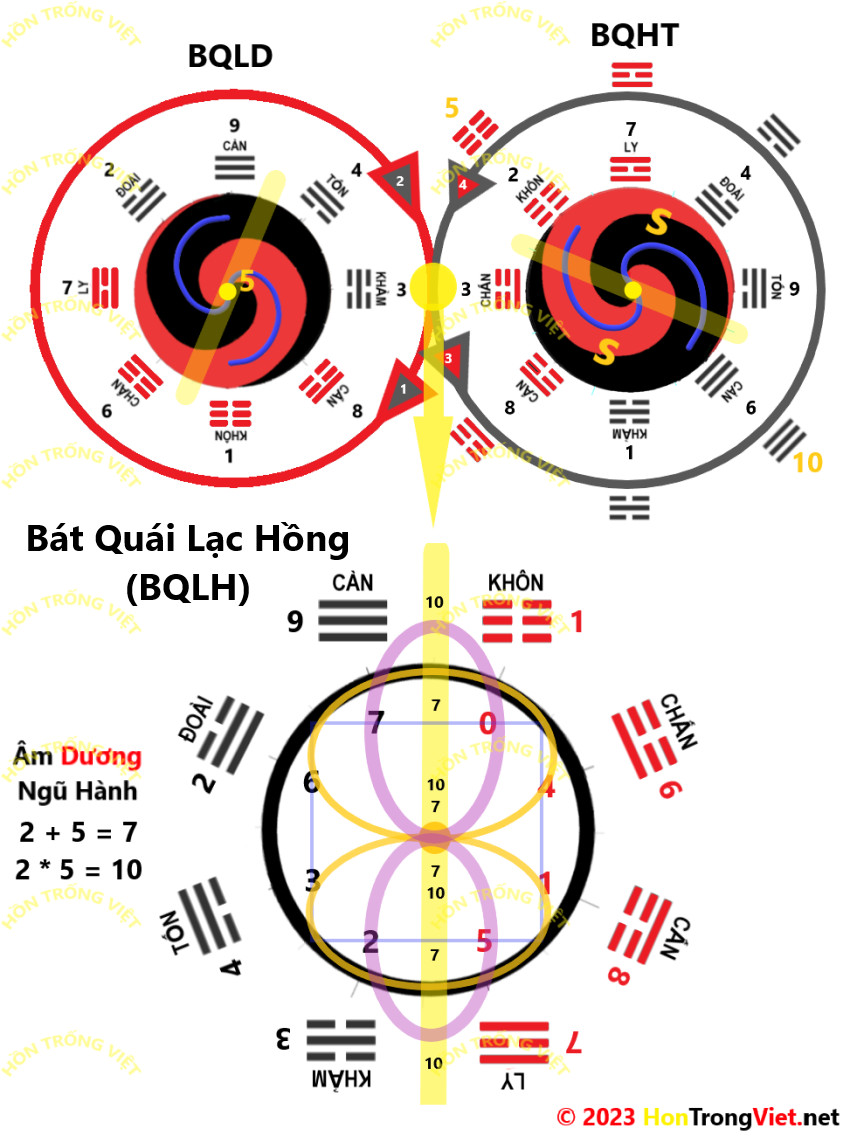
The Ngoc Lu bronze drum was discovered in 1893 in Ngoc Lu village, Ly Nhan, Ha Nam province of Vietnam. The drum is the most outstanding, beautiful & quintessential representative of Dong Son culture that existed between 900 BC and 200 AD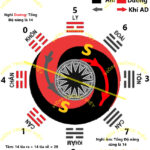 DTV coi quái Càn, Tinh thần, vô hình, vô hạn, vạch liền, số lượng lẻ, vòng tròn & màu đen là âm, còn quái Khôn,... More. As the one of the oldest drums, many researchers agree that the age of drums is about 2500 years old.
DTV coi quái Càn, Tinh thần, vô hình, vô hạn, vạch liền, số lượng lẻ, vòng tròn & màu đen là âm, còn quái Khôn,... More. As the one of the oldest drums, many researchers agree that the age of drums is about 2500 years old.
Thus, in terms of chronology, the Drum & VDC encoded on it have existed in parallel with “I Ching”, one of the 5 Chinese classics since at least 2500 years ago but almost no one knows 1Source: Wikipedia.
Recognized as the National Treasure of Vietnam, the Drum is currently displayed at the National Museum of History in Hanoi2Source: Vietnam National Museum ofHistory.
Viet Drum Law of the Changes is a system, consisting of Diagrams, symbols, numbers, models, rules, laws, methods, their relationships and meanings. It is the content of the theory of “Am Duong DTV coi quái Càn, Tinh thần, vô hình, vô hạn, vạch liền, số lượng lẻ, vòng tròn & màu đen là âm, còn quái Khôn,... More Ngu Hanh (ADNH)” or “Yin Yang
DTV coi quái Càn, Tinh thần, vô hình, vô hạn, vạch liền, số lượng lẻ, vòng tròn & màu đen là âm, còn quái Khôn,... More Ngu Hanh (ADNH)” or “Yin Yang DTV coi quái Càn, Tinh thần, vô hình, vô hạn, vạch liền, số lượng lẻ, vòng tròn & màu đen là âm, còn quái Khôn,... More Five Interactions”, one of the most inclusive & ancient philosophies of mankind.
DTV coi quái Càn, Tinh thần, vô hình, vô hạn, vạch liền, số lượng lẻ, vòng tròn & màu đen là âm, còn quái Khôn,... More Five Interactions”, one of the most inclusive & ancient philosophies of mankind.
The “I Ching” & Viet Drum Law of Changes

The “I Ching” with its famous symbol Tai Chi is well-known not only in China, Vietnam, Far-easten countries but also around the world.
The I Ching consists of 3 main parts – The Sutra including hexagrams’ statements & lines’ comments, Ten Wings & Diagrams.
Looking at the History of I Ching, we’ll notice a turning point occurred around 400-500 BCE, when the Ten wings were compiled. Hundreds or thousands of years before the Ten Wings’s inclusion, “I Ching” was called “Zhou Yi” with just the Sutra, diagrams Ha Do Hồng Thư, đồ hình nền tảng của Dịch Trống Việt. Hồng Thư phối với Bát Quái Hồng Thư (BQHT). Hồng thư giống Hà đồ của... More, Lac Thu
Hồng Thư, đồ hình nền tảng của Dịch Trống Việt. Hồng Thư phối với Bát Quái Hồng Thư (BQHT). Hồng thư giống Hà đồ của... More, Lac Thu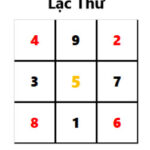 Đồ hình của Kinh Dịch, phối với Hậu Thiên Bát Quái (HTBQ). Lac Thu, a I Ching's Diagram that associates with the Late Heaven Eight... More, 8 Trigrams & Phuc Hy’s 64 hexagrams.
Đồ hình của Kinh Dịch, phối với Hậu Thiên Bát Quái (HTBQ). Lac Thu, a I Ching's Diagram that associates with the Late Heaven Eight... More, 8 Trigrams & Phuc Hy’s 64 hexagrams.
Vietnam and China have many things in common due to the geographical proximity, the sharing of history, culture, traditions etc. However, like all other countries and peoples in the world, there are differences too. I Ching & Viet Drum Law are not the exception. That’s why when we introduce the Viet Drum Law, the reference to “I Ching” is inevitable.

Our purpose is to present the VDC’s unknown diagrams & make Viet Drum Law of Change to be more known & understood to the world, and hopefully, there will be more in-depth research & studies, because we believe that VDC carries important messages to humankind.
To the Vietnamese people, studying the Drum & VDC is even more meaningful as it is a product that expresses our ancestors’ worldview on the nature, society, life & human and has been institutionalized, turn into customs, traditions, language, speech, way of thinking, and way of life, past and present.
The Whole, Primary & Secondary
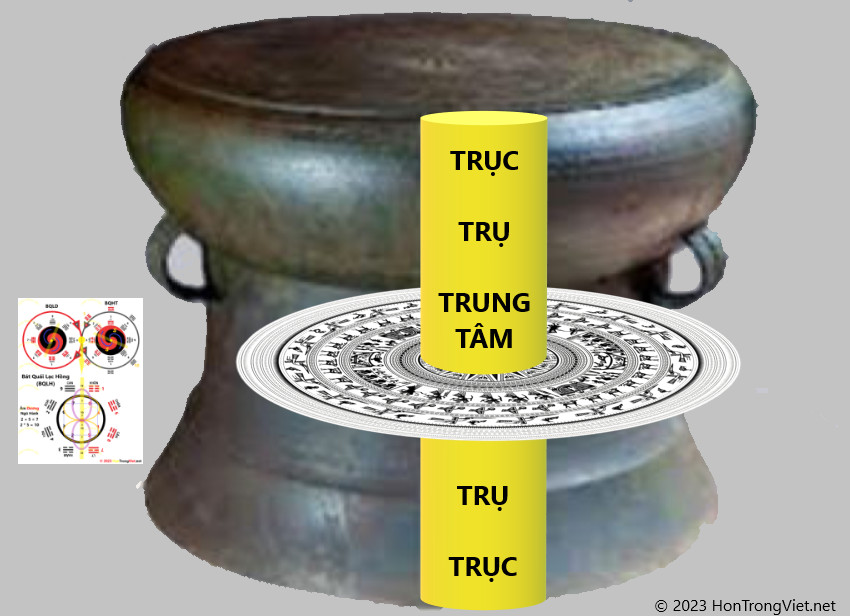
The VDC, the Ngoc Lu Bronze Drum and Theory of the Am Duong DTV coi quái Càn, Tinh thần, vô hình, vô hạn, vạch liền, số lượng lẻ, vòng tròn & màu đen là âm, còn quái Khôn,... More Ngu Hanh or ADNH (Yin Yang
DTV coi quái Càn, Tinh thần, vô hình, vô hạn, vạch liền, số lượng lẻ, vòng tròn & màu đen là âm, còn quái Khôn,... More Ngu Hanh or ADNH (Yin Yang DTV coi quái Càn, Tinh thần, vô hình, vô hạn, vạch liền, số lượng lẻ, vòng tròn & màu đen là âm, còn quái Khôn,... More Five Interactions) are One or a unified whole, in which there are all the parts that are in a close and organic relationship with each other.
DTV coi quái Càn, Tinh thần, vô hình, vô hạn, vạch liền, số lượng lẻ, vòng tròn & màu đen là âm, còn quái Khôn,... More Five Interactions) are One or a unified whole, in which there are all the parts that are in a close and organic relationship with each other.
Similarly, each diagram is a whole consisting of trigrams, their yin yang DTV coi quái Càn, Tinh thần, vô hình, vô hạn, vạch liền, số lượng lẻ, vòng tròn & màu đen là âm, còn quái Khôn,... More, numbers, energy level
DTV coi quái Càn, Tinh thần, vô hình, vô hạn, vạch liền, số lượng lẻ, vòng tròn & màu đen là âm, còn quái Khôn,... More, numbers, energy level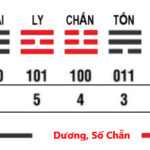 Biểu thị năng lượng của quái bằng số thập phân, thông qua số nhị phân. Represents the energy of the trigram in decimal, through the binary number.... More etc. As a whole, the laws & diagrams we found on Drum such as BQLD
Biểu thị năng lượng của quái bằng số thập phân, thông qua số nhị phân. Represents the energy of the trigram in decimal, through the binary number.... More etc. As a whole, the laws & diagrams we found on Drum such as BQLD Bát Quái Lạc đồ giống TTBQ của KD nhưng phối với số Lạc Đồ còn TTBQ phối Hà Đồ. BQLD is similar to TTBQ or... More, BQHT
Bát Quái Lạc đồ giống TTBQ của KD nhưng phối với số Lạc Đồ còn TTBQ phối Hà Đồ. BQLD is similar to TTBQ or... More, BQHT Bát quái Hồng thư là Bát quái phối với số của Hồng Thư. 8 trigrams related to the numbers of Hong Thu.... More, BQLH
Bát quái Hồng thư là Bát quái phối với số của Hồng Thư. 8 trigrams related to the numbers of Hong Thu.... More, BQLH Bát quái Lạc Hồng (BQLH) hay Tài Nhân (BQTN) là Bát quái hợp nhất của BQLD & BQHT. BQLH cũng đồ hình về con người... More & Spiral or 5 Interactions Law are all new, no author has presented them before. To be more precise, they are the oldest & the most original that we rediscover.
Bát quái Lạc Hồng (BQLH) hay Tài Nhân (BQTN) là Bát quái hợp nhất của BQLD & BQHT. BQLH cũng đồ hình về con người... More & Spiral or 5 Interactions Law are all new, no author has presented them before. To be more precise, they are the oldest & the most original that we rediscover.
The first & greatest credit belongs to the Drum’s creators, who are also the saints, artists, philosophers, mathematicians & scientists. Thanks to them we have rediscovered the VDC.
VDC is a Wordless Sutra, whose primary or most important aspect is the Drum, diagrams, symbols, images, models & numbers. Our comments are secondary compared to them. Agree or not, we can all look at the Drum, an original artifact that is 2500 years old. Looking at the same Drum but having different opinions is very common. However, hopefully, the Drum will be a solid foundation for us to analyze, deduce, discuss, share & exchange ideas.
Even though wordless, knowledge & wisdom of the Viet Drum Law of Changes encoded on the drum are wide, infinite & profound that the more we understand, the more we’ll realize how little we know.
However, with efforts of many people, coupled with the guidance & help from VDC, “Ngoc Lu” and other “Dong Son” drums, we will find and decode its other mysteries & its foundation, the “Am Duong DTV coi quái Càn, Tinh thần, vô hình, vô hạn, vạch liền, số lượng lẻ, vòng tròn & màu đen là âm, còn quái Khôn,... More Ngu Hanh” Theory (Yin Yang
DTV coi quái Càn, Tinh thần, vô hình, vô hạn, vạch liền, số lượng lẻ, vòng tròn & màu đen là âm, còn quái Khôn,... More Ngu Hanh” Theory (Yin Yang DTV coi quái Càn, Tinh thần, vô hình, vô hạn, vạch liền, số lượng lẻ, vòng tròn & màu đen là âm, còn quái Khôn,... More Five Interactions).
DTV coi quái Càn, Tinh thần, vô hình, vô hạn, vạch liền, số lượng lẻ, vòng tròn & màu đen là âm, còn quái Khôn,... More Five Interactions).
